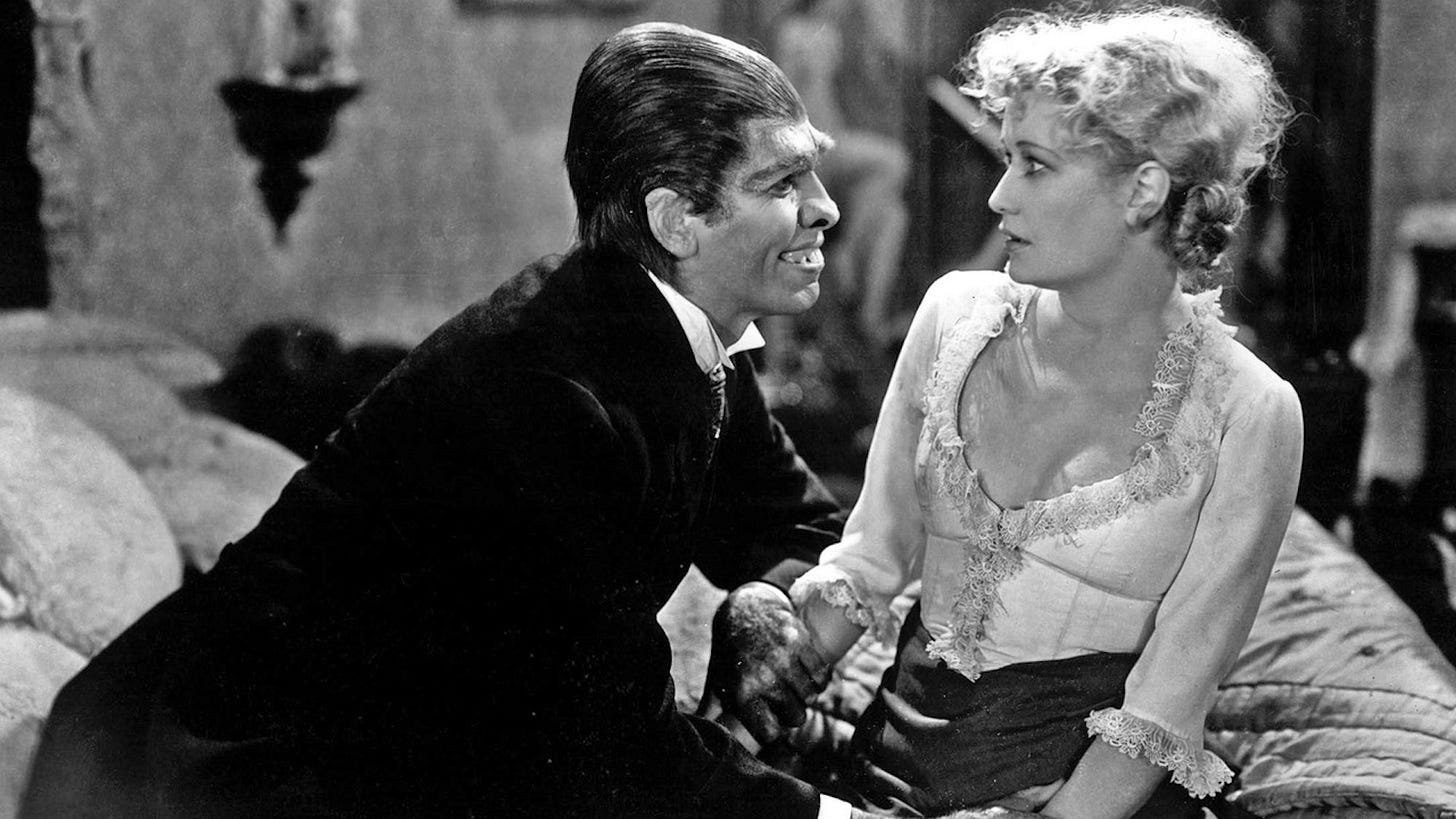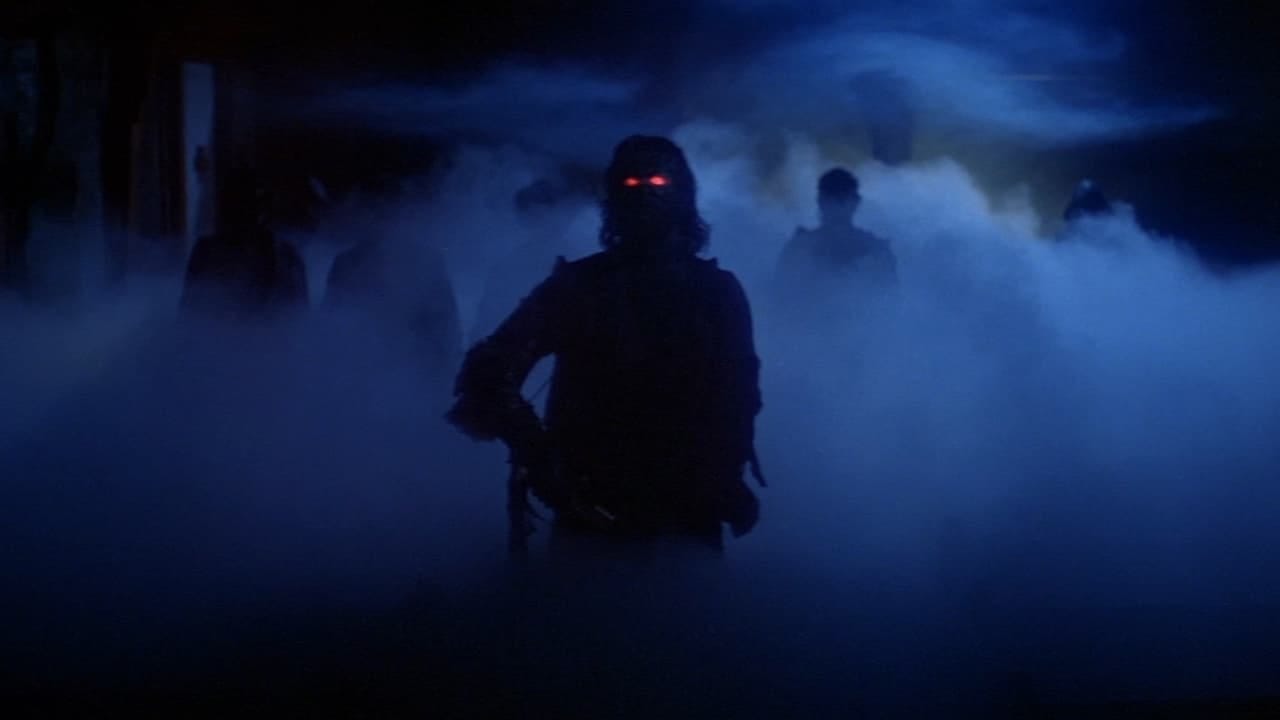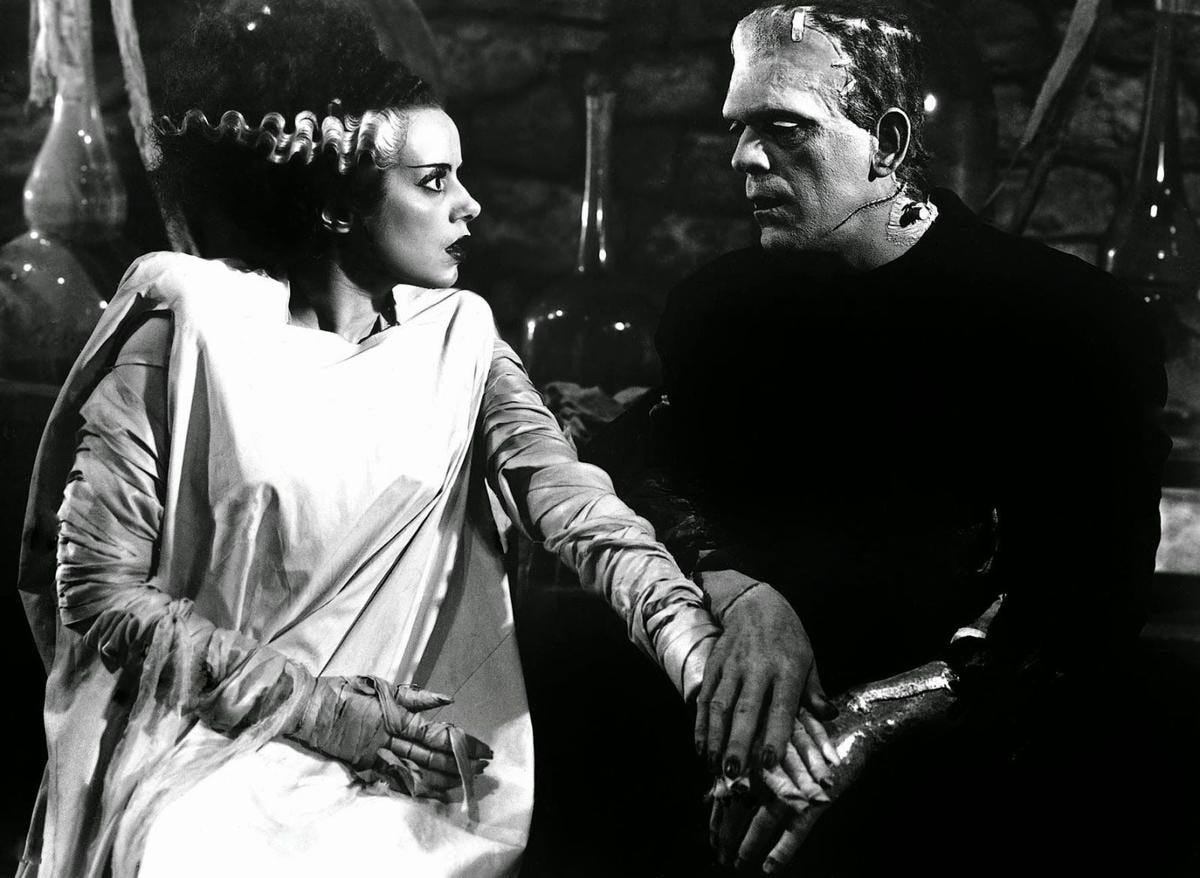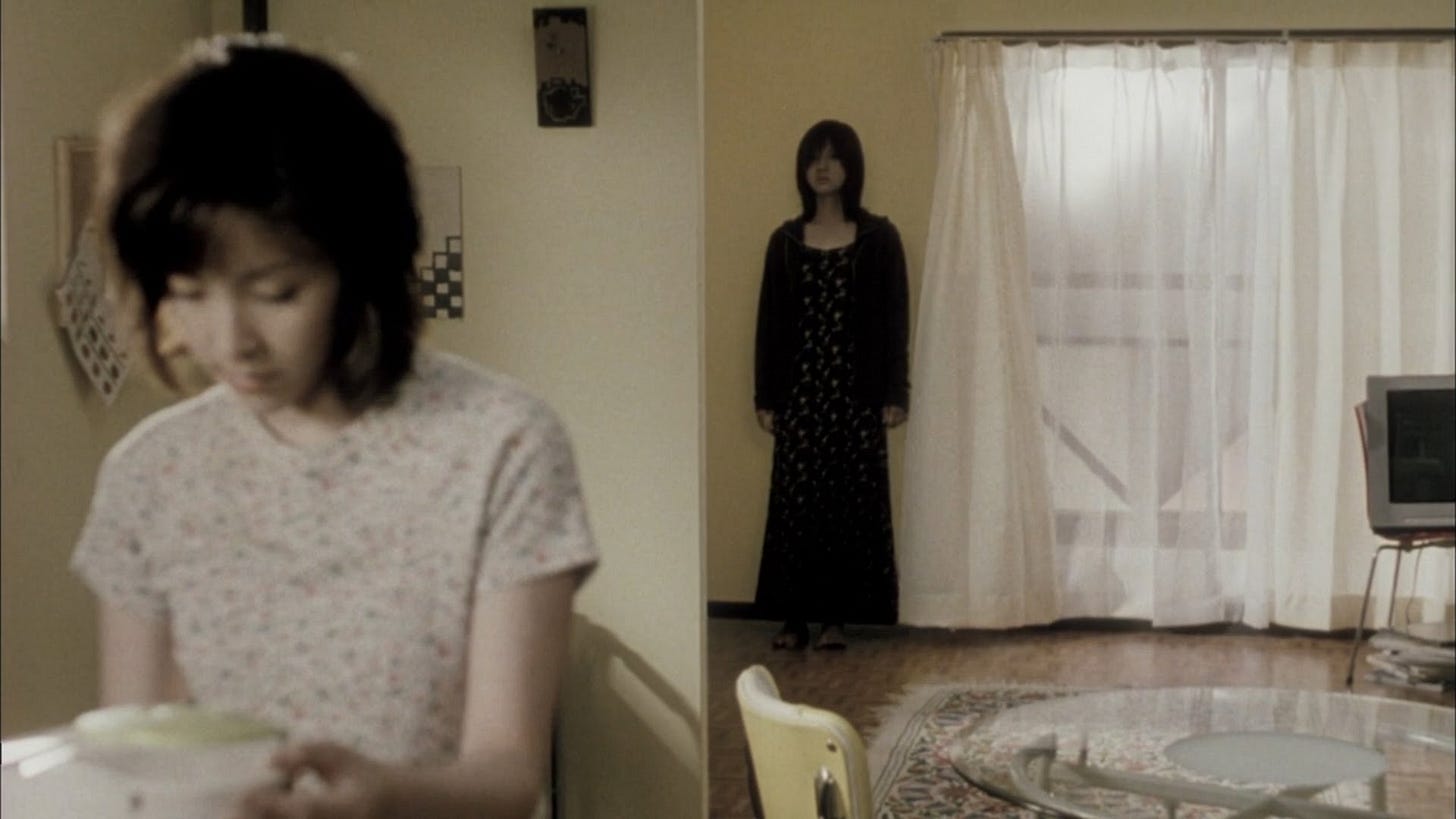Prime Horror: Hallowreels for Halloween
A list of great horror films to watch on the best night of the year.
Halloween III: Season of the Witch
Perhaps no other genre than horror better reveals the times in which we live. Our nightmares and everyday reality in the history of humanity have always been great material for art of all kinds. The cinema is perhaps the most effective medium at giving us the thrills and chills that capture the fears, anxiety, and darkness of our lives and the world. Images and sound meant to inflict the feeling of fight, flight and fright. We listen to screams or the slush of blood and guts while unable to avert our wide eyes from the horror we so willingly paid money to sit down in a dark room and experience. It’s a beautiful thing that can help us to reckon with this horrifying thing called being a human being.
Therefore, being Halloween and all, I thought I’d share a list of some of my favorite horror films and all time great spooky pictures. This Substack celebrates the art form at its greatest, when it was projected on the format in which they were meant to be seem - celluloid during the 20th century. Therefore, this list includes films from the early days of cinema to the 1990s. These are prime horror projections, or as I like to call them in October, Hallowreels, all worth watching for Halloween, the best night of the year.
Dr. Jekyll and Mr. Hyde (1920, John S. Robertson and 1931, Rouben Mamoulian)
Victor Fleming’s 1941 adaptation (starring Spencer Tracy) of Robert Louis Stevenson’s 1886 novella is not a bad picture, but when comparing it to its two predecessors from 1920 and 1931, respectively, it's easily the worst. John S. Robertson’s 1920 film, produced by Famous Players-Lasky (which would eventually become Paramount), is perhaps the creepiest with John Barrymore’s Hyde more devil than beast. His appearance becomes more hideous as he purchases opium and dishonors women. The 1931 pre-Code adaptation from Rouben Mamoulian is where to go if you want less scares and more carnal desire. The grotesqueness of Fredric March’s Hyde lies in his lust for and abuse of Miriam Hopkins; few horror films ooze as much sex (though mostly exploitative) as this one does. Mamoulian’s film also puts to rest all the ridiculous claims about the filmmaker’s limited toolbox at the advent of sound. Not only is there clever in-camera special effects, the film opens with a tracking POV shot giving us a first look at March’s handsome Dr. Jekyll in a mirror. That same type of shot later watches Miriam Hopkins taking off her stockings (the film’s cinematographer was the brilliant Karl Struss). The 1931 version is the best Jekyll/Hyde picture and an essential pre-Code, where in Dr. Jekyll’s transformation to Mr. Hyde, Freud’s theory of the id is made horrifyingly and thrillingly physical.
Fredric March as Mr. Hyde and Miriam Hopkins as Ivy Pearson in Dr. Jekyll and Mr. Hyde (1931)
Halloween (1978, John Carpenter)
What more can be said about John Carpenter’s original masterwork? I love both Rob Zombie’s 2007 Halloween (a wrathful, mean film) and David Gordon Green’s 2018 legacy sequel (invigorating new life into the franchise), but nothing will ever match the first time the boogeyman hit the screen. Initially titled The Babysitter Murders and ultimately naming it simply after the best holiday of the year, Carpenter, screenwriter Debra Hill and producer Irwin Yablans, who came up with the idea, concocted horror movie magic with possibly the best slasher ever made with an iconic score by Carpenter that’s an essential soundtrack every October. The establishing shots overlaid with Michael’s heaving through his mask at the end haunts me every time. Roger Ebert summed it up perfectly: “Halloween is a visceral experience. We aren’t seeing the movie, we’re having it happen to us. It’s frightening. Maybe you don’t like movies that are really scary: Then don’t see this one.”
Black Christmas (1974, Bob Clark)
If one wanted to counter the argument about Halloween being the best slasher ever made, then they could point to a film from just a few years earlier. It’s set during Christmas time, but it’s a perfect Hallowreel. A terrifying, eerie, and feminist slasher that makes you want to put the holiday parties on hold for, well, forever.
Halloween III: Season of the Witch (1982, Tommy Lee Wallace)
I didn’t want to include too many of the Halloween sequels on this list (in a perfect world, there are no sequels to the original Halloween but Hollywood is Hollywood and when movies exist, I watch them), but not only is Halloween III an anthology sequel putting aside the evil wrath of Michael Myers, it’s one of the best of the franchise. Many tend to disagree, but I am of the many that do. Not only is Season of the Witch a wonderful Halloween movie, it’s a film that’s aged considerably well in its depiction of consumer culture and the neoliberal devouring of our world and our bodies. It’s not masks on our heads, it’s the synthetic chemicals and artificial shit slowly killing us. The more corporations and their leaders (and the politicians who enable them, which is all of them) grow, the faster our deaths come. It has an all-timer, bummer of an ending too. Sure, it’s bonkers and silly. Has there ever been a setpiece wit that many jump scares? The masks are the most rudimentary of Halloween products (give the kids more choices!) and there’s a weird, out of pocket anti-Irish thing going on throughout the film. However, it’s a dark delight and one of my favorite Hallowreels.
Halloween 4: The Return of Michael Myers (1988, Dwight H. Little)
When Halloween III had a disappointing box office, Universal eschewed the anthology idea and brought Michael Myers back. I really like Halloween II as well, but since I’m really in the minority for this one I included Halloween 4 instead. I believe it is unfairly maligned. The opening proves this immediately, setting the tone with a both lovely and eerie autumn/Halloween ambience. This one has a more rural feel that I jive with. It also has some of Michael’s best work (rocking chair cop pretense, chucking gun-toting hillbillies from the bed of a moving truck, stabbing with a shotgun), a clear idea, and one hell of a bold ending. If not all the sequels are great, at least a lot have great endings (see also Halloween H20 [1998]).
Island of Lost Souls (1932, Erle C. Kenton)
Back to some pre-Code horror and once again, as pre-Code as it gets. Adapted from H.G. Wells’ 1896 novel “The Island of Dr. Moreau,”, this Paramount horror film is quite remarkable. Charles Laughton is the sadistic Dr. Moreau, a mad scientist hell-bent on turning animals into humans. Believing their evolution into Homo sapiens to be inevitable, his experiments are attempts to expedite this process. In the meantime, Richard Arlen falls in love with Kathleen Burke, who is part panther. Bela Lugosi also appears as a submissive hairy humanoid creature who worships and submits to Dr. Moreau. It’s a mind-boggling, twisted hell of a time. Also hauntingly shot by Karl Struss.
Cat People (1942, Jacques Tourneur) and The Curse of the Cat People (1944, Robert Wise and Gunther von Fritsch)
Cat People was the first of many great collaborations between RKO producer Val Lewton and visionary auteur Jacques Tourneour. A B-movie psychodrama tackling the horrors of generational trauma, sexual repression, and being “othered” with striking ambiguity, masked by the mood and shadows of its genre and filmed with Tourneur’s signature style, economical and precise. Besides elaborating on certain themes, its sequel from 1944, The Curse of the Cat People is not exactly a direct sequel and not much of a horror film, but it is a dream fit for snuggling up in fall weather. Like the first film, it’s far ahead of its time (even when lacking Tourneur, whose films were unlike any other in classical Hollywood). It’s a psychological fairytale about childhood, the film version of those adults who treat children as equals. It’s a gorgeously shot, atmospheric story about imagination and confronting the past while confirming that the wondrous fantasy of a child’s brain is the most rational place on earth. Children hold all the wisdom and the tragedy is that children grow up.
The Leopard Man (1943, Jacques Tourneur)
As per Tourneur, a horror picture ahead of its time. With one of the most disturbing and violent deaths in cinema (running blood under the door), it’s a tense 66 minutes set in a small multicultural town (Tourneur was one of the few directors of classical Hollywood who respectfully showcased non-white characters and perspectives) falling into a paranoia during a mysterious murder spree. Producer Val Lewton and Tourneur’s final collaboration was a brilliant swan song.
The Texas Chainsaw Massacre (1974, Tobe Hooper)
It’s the greatest horror film ever made. Crude, gnarly, visceral, gritty and grimy. Sadistic poetry. The slaughterhouse that is the American dream and empire.
The Funhouse (1981, Tobe Hooper)
One of the best horror-carny pictures ever. Outrageous and grotesque, Tobe Hooper’s film is drenched in dread and humor before delving into a bizarre, icky, and unhinged climax. It’s a blast.
Prince of Darkness (1987, John Carpenter)
Another picture from one of the greatest American directors. Part of Carpenter’s Apocalyptic Trilogy (The Thing and In the Mouth of Madness are the other two), Prince of Darkness contains a collective dream sequence that the characters have that is absolutely chilling, thanks to its terrifying imagery and sound design. Perhaps Carpenter’s deepest and grandest dive, existential and scientific amidst the luridness of the supernatural.
The Fog (1980, John Carpenter)
Carpenter’s most stunningly shot film. The tension is off the charts and only Carpenter can turn a remote, peaceful coast town into a creepy, haunting place beset by a curse ripe for campfire stories.
John Carpenter’s The Fog (1980)
In the Mouth of Madness (1994, Carpenter)
Only masters can improve upon their great works and Carpenter continued to do so in the 90s with In the Mouth of Madness. A New-England set psychological terror of madness and mayhem. Another great score from Carpenter, a game performance from Sam Neill, and wonderful special effects, this is as entertaining as horror gets.
Bram Stoker’s Dracula (1992, Francis Ford Coppola)
We all know and love Tod Browning’s and Bela Lugosi’s Dracula (1931). Coppola’s film is a feat of audio-visual brilliance. Gothic storytelling at its most erotic and sensual. Pleasures abound in the horror of its colorful and stylistic flourish.
The Night of the Hunter (1955, Charles Laughton)
One of the greatest motion pictures ever made, beyond its time and has some of the most perfectly composed and indelible frames in film history. Charles Laughton’s one and only masterpiece is a nightmare horror film, a dreamy childhood fairytale, and a beautiful ode to the film pioneers of the silent era. Audiences at the time weren’t ready for it, but it has more than earned its reputation today as one of the great works of cinema.
Alien (1979, Ridley Scott)
I mean, what else can I say about Alien? It is the scary movie. Maybe the scariest ever.
The Masque of Red Death (1964, Roger Corman)
All of Roger Corman’s Poe adaptations are well worth the watch, but The Masque of Red Death - one of Poe’s shortest yet effective stories - works the best translated to screen. A glorious, colorful frenzy of debauchery, decadence, and terror.
The Devils (1971, Ken Russell)
Excruciating, insane, harsh, and wonderful. Movies used to be so bold. A scathing takedown of the emptiness of religious piety and the hysteria wrought by religious institutions, made so terrifying by its insistence on humanity’s inevitability to destroy itself with these divine inclinations. Just as fitting today as the time in which it’s set.
The House by the Cemetery (1981, Lucio Fulci)
A gnarly, quasi-slasher giallo horror film from the great Italian director Lucio Fulci. One of the best endings of any genre.
The Brood (1979, David Cronenberg)
There are so many Cronenberg pictures I could include on this list (The Fly, Videodrome, Scanners, Shivers, Rabid) but I’m going with The Brood. An early personal film from the master filmmaker, post-divorce reckoning bearing the scars of a traumatic childhood. His signature body-horror is on a much lesser scale here, but there’s plenty of blood and horror to satisfy.
Carrie (1976, Brian De Palma)
An all-time classic that’s will never be not hard to watch.
Psycho (1960, Alfred Hitchcock)
It has to be here. The shower scene alone is perfect for Halloween night.
Blind Beast (1969, Yasuzō Masomura)
Not the best, but an interesting J-horror and pinku film that is well worth a viewing. A surreal, minimalist dive into the pleasures of sexual self-indulgence that unravels into something else completely.
House (1977, Nobuhiko Obayashi)
A teenage girl gets eaten by a piano. That should be enough inspiration to watch House. It’s a fever dream of a film that reminds of how limitless cinema really is. Vivid, kaleidoscopic, magical, and horrifying all in one. A movie that feels like it is aware that it’s a movie and it works so well.
Night of the Living Dead (1968, George A. Romero)
I’ll never forget the first time I watched Night of the Living Dead. A seminal, monumental film. A gut-punch ending that will forever define America until we can wake up from our own graves.
Dawn of the Dead (1978, Romero)
Romero’s sequel is ridiculously hard to find (I borrowed a friend’s physical bootleg copy). But if one can find it, they are forever rewarded with Romero’s magnum opus. The quintessential zombie flick. And the smartest.
Day of the Dead (1985, Romero)
The third film of Romero’s zombie series is the most straightforward and all the better for it. A zombie picture that makes you fear men more than zombies. Forget the dead, it’s the living that we need to keep any eye on.
Murders in the Rue Morgue (1932, Robert Florey)
A fun little hour-long pre-Code horror starring Bela Lugosi as a mad doctor trying to prove evolution is a real thing by kidnapping women and injecting them with ape blood? Yes please.
Murders in the Zoo (1933, A. Edward Sutherland)
It’s hard to tell if this film is horror or a comedy. Either way, it’s bizarre pre-Code fun. Horrible deaths by crocodiles and snakes!
The Black Cat (1934, Edgar G. Ulmer)
Before he made the seminal noir Detour (1945), Edgar G. Ulmer made one of the best pre-Code horror films at Universal. Bela Lugosi and Boris Karloff star in this exquisite and prescient study on trauma and modernity’s present and post-WWI destruction. Satanism, torture, drugs, and frightening atmosphere are all featured. It’s one of the best films of the 1930s.
Candyman (1992, Bernard Rose)
Perhaps a good double feature with The Black Cat, a fearful look at how the world moves on and forgets about past atrocities, often deliberately so, by building over the ground on which they occurred. Worth watching for Tony Todd’s booming, petrifying voice alone.
Bride of Frankenstein (1935, James Whale)
Whale’s Frankenstein (1931) is iconic, I thought I’d include the sequel here, which is just as iconic. As haunting and beautiful and tragic as the first one. The art direction and special effects are still incredible. James Whale was a master craftsman.
Elsa Lanchester as The Bride and Boris Karloff as The Monster in Bride of Frankenstein (1935)
The Invisible Man (1933, James Whale)
Here’s that Whale fellow again. Claude Rains, one of the greatest actors in Hollywood history, is an invisible, maniacal madman. Adapted from H.G. Wells’ 1897 novel, the body count is high in this one. He derails a train at one point, which undoubtedly kills a lot of people. Ghoulish, unhinged, and creepy. Plenty of moments of levity, but surprisingly really dark at times.
Vampyr (1932, Carl Theodor Dreyer)
The great Carl Theodor Dreyer’s experimental horror film is unlike anything else of its time and still so today. A monumental work of art. Preternaturally eerie with chills sourced from its aesthetic experiment. Horror through the expression of pure cinematic form.
The Wolf Man (1941, George Waggner)
The last great Universal monster movie. A fog-filled tragedy, the wolf man hiding in the woods (Universal’s iconic forest set) and shadows of moonlight. The final kill is both disturbing and heartbreaking.
Mystery of the Wax Museum (1933, Michael Curtiz)
Warner Bros. also had some horror fun in the early 1930s. Putting their always reliable craftsman Michael Curtiz on the project, Mystery of the Wax Museum is a freaky, two-toned color picture ripe with the macabre and sprinkled with some Depression escapism. Also it has Glenda Farrell and Frank McHugh, two people always worth watching a movie for. Lots of pre-Code and Prohibition era good times too.
Nosferatu (1922, F.W. Murnau)
Perhaps a good watch in preparation for Robert Egger’s upcoming remake this December, but F.W. Murnau’s masterpiece stands alone as one of the creepiest horror films of all time. Both a quintessential silent film and horror film, but a quintessential film in general. It’s peak filmmaking in 1922.
The Haunted Castle (1896, Georges Méliès)
Yes, in the 1890s, at the dawn of cinema, the spectacle of horror was already beginning. This three minute “cinema of attractions” is a wonderful showcase for the genius of Méliès - goblins, bats, skeletons all feature. I don’t think his intention was to scare, but rather to amaze with the magic of a novel, burgeoning art form. It’s a spooky good time nonetheless.
Creature from the Black Lagoon (1954, Jack Arnold)
1950s B-movie greatness, surprisingly sympathetic to its monster and a lot of evolution talk, which is also surprising for the conservative 50s (though I could write a whole other piece about the many progressive films of the 1950s that shatter perceptions of that decade).
Infernal Cauldron (1903, Georges Méliès)
More Méliès madness. Demons and witchcraft!
Frankenstein (1910, J. Searle Dawley)
The monster’s look isn’t as iconic but this 12-minute 1910 adaptation has its merits. Great staging and compositions, one including a mirror. The method in which he is born is especially freaky and cool.
The Golem: How He Came Into the World (1920, Carl Boese, Paul Wegener)
German Expressionism at its pinnacle. Spellbinding in its atmosphere and art direction, crooked and architecturally marvelous. A visual feast of romance and horror.
The Cabinet of Dr. Caligari (1920, Robert Wiene)
More grim German Expressionist than the above. Post-war Germany on its broken stilts, crooked angles of hope invoking a better Germany that is only a dream. The original psychological thriller and an all-time horror classic.
The Haunted House (1921, Buster Keaton and Eddie Cline)
Buster Keaton gets in the Halloween spirit, giving his slapstick comedy some spooky riffs while his usual visual tricks are in service to the ghoulish and haunted.
The Execution of Mary, Queen of Scots (1895, Alfred Clark)
Not necessarily a horror film, but another interesting very early, one minute cinematic exercise. The obvious use of a dummy doesn’t distract from the gruesome act. Had to include it here.
Monkeyshines. No. 1 (1890, William K.L. Dickson, William Heise)
Maybe the first horror film? Though experimenting with new technology and not intentionally scary, one can’t help but feel freaked out by this distorted white figure moving almost like a ghost literally caught on camera. It just happens to be one of the first cameras that captures moving images.
Pulse (2001, Kiyoshi Kurosawa)
I know this is 2001, a 21st-century film. But I had to sign off with one of the scariest, most visually affecting films ever. Strikingly prescient and so effective at instilling an internet-fueled loneliness that can’t be cured. We’re officially living in the reality of this film, Pulse is our current crisis. I was so viscerally chilled to my core watching this film alone in the dark, I thought about quitting movies altogether.
Happy Halloween!









Good stuff Sam. While I don’t really like horror films, your critiques take me back to my youth when I did and makes me want to watch another.